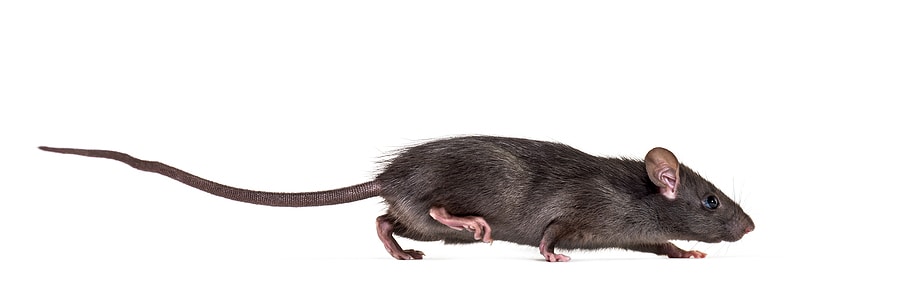One of the most common rodents invading homes is the roof rat, also known as the palm rat, fruit rat, ship rat, and Alexandrian rat. Norway rats, which are stockier than roof rats, can also invade dwellings. If you want to get rid of the rats in your attic, you need to identify the species first. There are several key distinctions between roof rats and Norway rats. Let’s take a look at a few of the distinctions.
SIZE
Roof rats are smaller than Norway rats (also known as the sewer rat or brown rat) and have longer tails. They can reach a maximum length of 18 inches (including the tail) and a minimum weight of 5 ounces.
APPEARANCE
Roof rats are commonly black in color, while Norway rats are brown or gray. Compared to Norway rats, roof rats are smaller, thinner, and their fur is smooth. Large, hairless ears and pointed faces are two other distinguishing characteristics of these rodents.
HABITAT
Roof rats, in contrast to other rat species, are adept climbers and construct their nests in elevated locations rather than underground burrows. They build their nests outside in places like trees, shrubs, wood piles, and dense vegetation. Whenever possible, these pests will seek out the warmest part of the house, which is typically the attic or another upper level. There are a number of places in the house where they might set up shop for the winter, including attics, cabinets, ceilings, garages, interior walls, bathrooms, outdoor kitchens, and pool decks.
DIET
Unlike many other rat species, roof rats eat a lot of nuts and seeds rather than meat scraps and other high-protein foods. Because of this, nuts and fruits make up the bulk of a their diet, though they are omnivores like all rats. If they’re hungry enough, they’ll eat almost anything, including vegetation, pet food, animal feed, vegetables, insects, nuts, seeds, tree bark, and even lizards.
WATER
Roof rats require water to survive and will often use the following as a water source: watering holes, leaky pipes, AC lines, pet water bowls, flowerpots, sprinklers, and gutters.
SIGNS OF ROOF RATS
Because they are nocturnal and hunt for food at night, roof rats are not always visible. In order to detect an infestation, however, you must be familiar with the telltale signs of a problem. When located, the appropriate rodent prevention measures can be implemented.
The presence of roof rat feces is a clear indication of an infestation. Roof rat feces are less noticeable in size compared to those of Norway rats. The feces have sharp points and measure about half an inch in length. Other telltale signs of a roof rat infestation include:
- Rattling, squeaking, or other gnawing sounds from the ceiling or walls
- Damage to the eaves and/or roof from gnawing
- You can see them running along tree trunks, power lines, rooftops, patios, and fruit trees.
- Fruit with the pits removed, if you have fruit trees.
- Household electrical wiring is chewed on and damaged.
- Stressed and anxious pets.
- Leaving greasy footprints and smudges on the home’s regular passageways.
- Nests discovered in your home’s insulation.
WHAT HARM DO ROOF RATS CAUSE?
Roof rats can be a real nuisance, and their droppings and urine can be dangerous to your health. Roof rats can get into your home by gnawing holes in the soffit or eaves. As soon as they get inside, they can do a lot of harm by wire-chewing, which can cause electrical problems and fires; nibbling up in the rafters of the loft; gnawing on water lines and causing leaks; and reducing insulation’s effectiveness by trampling on it. They can also contaminate your home with their urine and feces, causing health problems for you and your family.
RODENT PREVENTION
Prevent roof rats with the following tips:
- Empty garbage regularly and put it in cans with tightly fitting lids.
- Keep your house clean and decluttered.
- Avoid using open compost piles.
- Store food in sealed containers.
- Only leave enough pet food out for one sitting.
- Keep pets, especially cats, around the house.
If you suspect you have a problem with roof rats or any other rodents, contact your local pest control company for a complete evaluation.
You May Also Be Interested In:
Common Rodents to Lookout for this Winter
14 Tips for Winter Pest Control
Are Spiders More Common In Winter?

